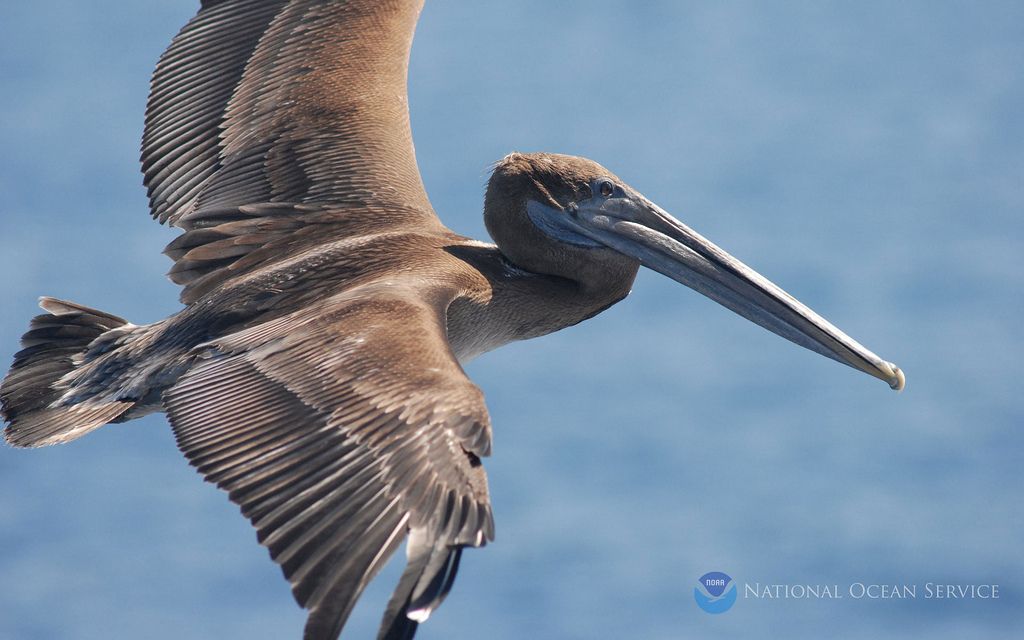Seabirds Carry Warnings of Ocean Pollution

The best tools for tracking how well pollution-reduction laws are working may be seabirds.
Seabirds, including pelicans, gulls and terns, are at the top of the food chain, and they absorb the toxins and pollutants contained in the fish they eat, researchers write in the May 3 issue of the journal Science. And because seabirds forage over wide areas of oceans but come back to one spot each year to breed, they provide scientists with a one-stop-shop to sample from a broad geographic region.
"They essentially go out much of the year onto the ocean, and they sample for you," said John Elliott, of Environment Canada, who penned the piece with University of Manitoba researcher Kyle Elliott. "As they're feeding, they're exposed to contaminants, particularly the bioaccumulative ones that we're most interested in."
Accumulating toxins
Bioaccumulative pollutants build up in biological tissue over time and can be passed down in eggs or milk, in the case of mammals. Perhaps the most famous example is DDT, an insecticide now banned for agricultural use because it thins the eggshells of birds.
Seabird toxin monitoring is not lethal to birds; scientists can collect feathers, blood, oils and small tissue samples without killing the creatures. That's more than can be said for pollution itself. Dead birds are regularly found with bellies full of plastic, reflecting an increasing contamination from fishing refuse and consumer trash. The Monterey Bay Aquarium estimates about 1 million seabirds (plus some 100,000 marine mammals and sea turtles) die from ingesting plastics every year.
Plastic is a common sight on beaches, where tiny fragments can mix in with the sand. At Kimalo Point on Hawaii's Big Island, for example, microplastic fragments are found as deep as 3 feet (0.9 meters) under the sand surface. [Photos: Hawaii's Beaches Marred By Debris]
Sign up for the Live Science daily newsletter now
Get the world’s most fascinating discoveries delivered straight to your inbox.
"[At] many places on the beach, it's hard to differentiate the sand from the plastics," Nicholas Mallos, an ocean debris specialist at the nonprofit Ocean Conservancy, told LiveScience in January after an expedition to the Big Island.
These plastics can be toxic themselves, leaching pollutants into the water, John Elliott said. And many ocean pollutants are hydrophobic, which means they don't mix well with water. These pollutants cling to plastics instead, meaning that when birds eat plastic pieces, they're getting a concentrated dosage of toxins.
"People say, 'Why aren't you regulating industry better — 3M and DuPont and Dow [Chemical Co.] and whoever?' but so much of the pollution now is the plastics, from personal behavior," he said. "Everybody's culpable."
Pollution ups and downs
Ongoing seabird monitoring has revealed a decline in DDT since the chemical was banned, but other threats have emerged, John Elliot said. Marine plastic debris is one. Similarly, levels of polybrominated diphenyl ethers, or PBDEs, have risen. Thanks to wildlife and environmental monitoring programs, it was discovered that these substances — used as flame-retardants on furniture, plastics and many other products — accumulate in tissues. PBDEs mimic thyroid hormones, meaning they can disrupt the body's hormonal controls. PBDEs are now being phased out of manufacturing, but there are "zillions of tons" of products already in circulation that have been treated with the chemical, Elliot said.
"That stuff is going to be leeching out into the system for years and years," he said.
A major part of the problem is that regulatory agencies are constantly playing catch-up to industry, Elliot said. Most new products are developed and manufactured in China and other nations where regulation is sparse. Products are already on the market by the time problems show up.
"If we hadn't had the monitoring systems [for PBDEs], that stuff would have gotten to the point where we would have started seeing more and more problems," Elliot said.
Follow Stephanie Pappas on Twitter and Google+. Follow us @livescience, Facebook & Google+. Original article on LiveScience.com.

Stephanie Pappas is a contributing writer for Live Science, covering topics ranging from geoscience to archaeology to the human brain and behavior. She was previously a senior writer for Live Science but is now a freelancer based in Denver, Colorado, and regularly contributes to Scientific American and The Monitor, the monthly magazine of the American Psychological Association. Stephanie received a bachelor's degree in psychology from the University of South Carolina and a graduate certificate in science communication from the University of California, Santa Cruz.











